Healthy Meal Prep: 7 Ultimate Secrets That Transform Lives
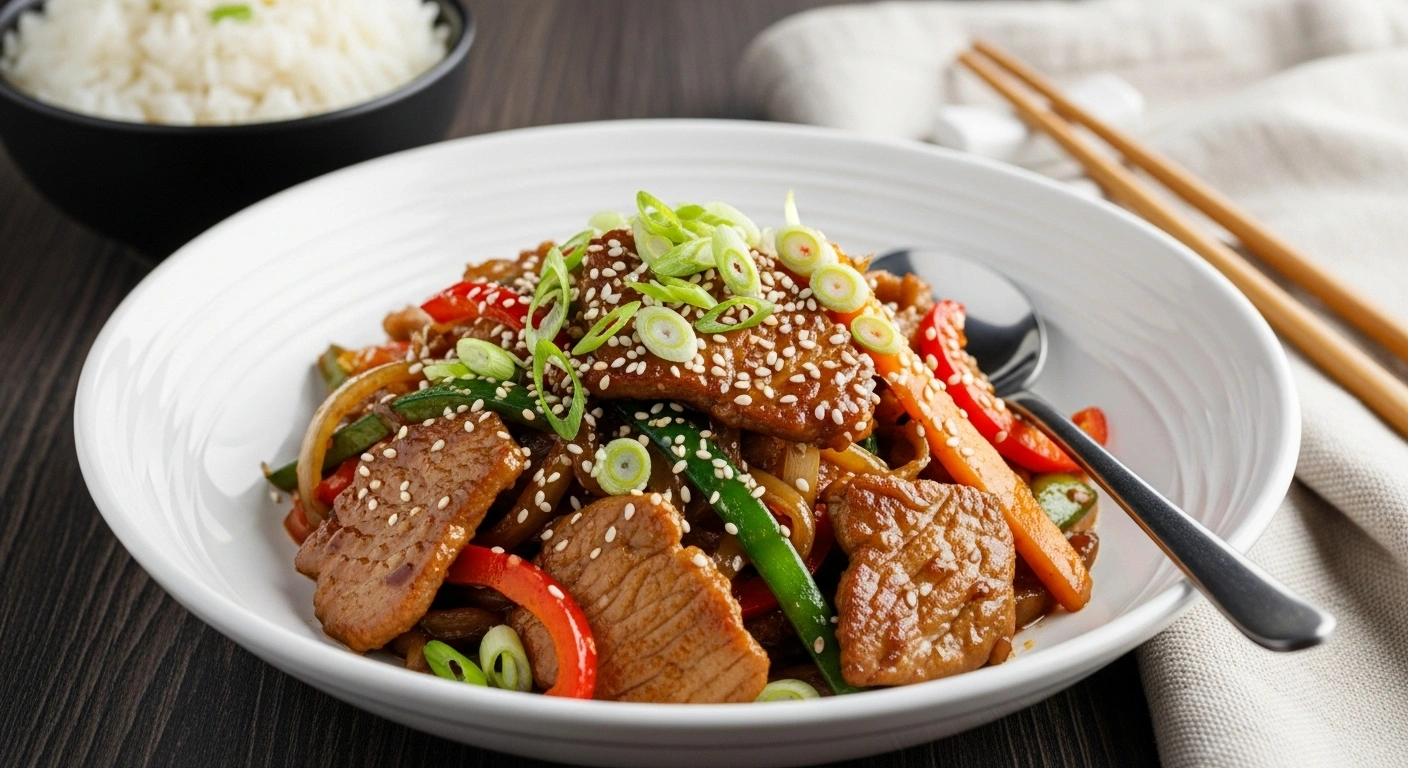
Introduction
Did you know that people who engage in healthy meal prep are 87% more likely to maintain their nutritional goals compared to those who don’t plan their meals ahead? This striking statistic challenges the common belief that eating well requires constant cooking and expensive ingredients. The truth is, with strategic healthy meal prep for the week, you can revolutionize your relationship with food while saving both time and money.
In our fast-paced world, the question isn’t whether you have time to eat well—it’s whether you can afford not to. This comprehensive guide will show you how to master healthy meal prep techniques that will transform your weekly routine, boost your energy levels, and help you achieve your wellness goals without the daily stress of deciding what to eat.
Whether you’re a busy professional, a parent juggling multiple responsibilities, or someone simply looking to streamline your nutrition, this meal prep strategy will become your secret weapon for consistent, delicious, and nutritious eating throughout the week.
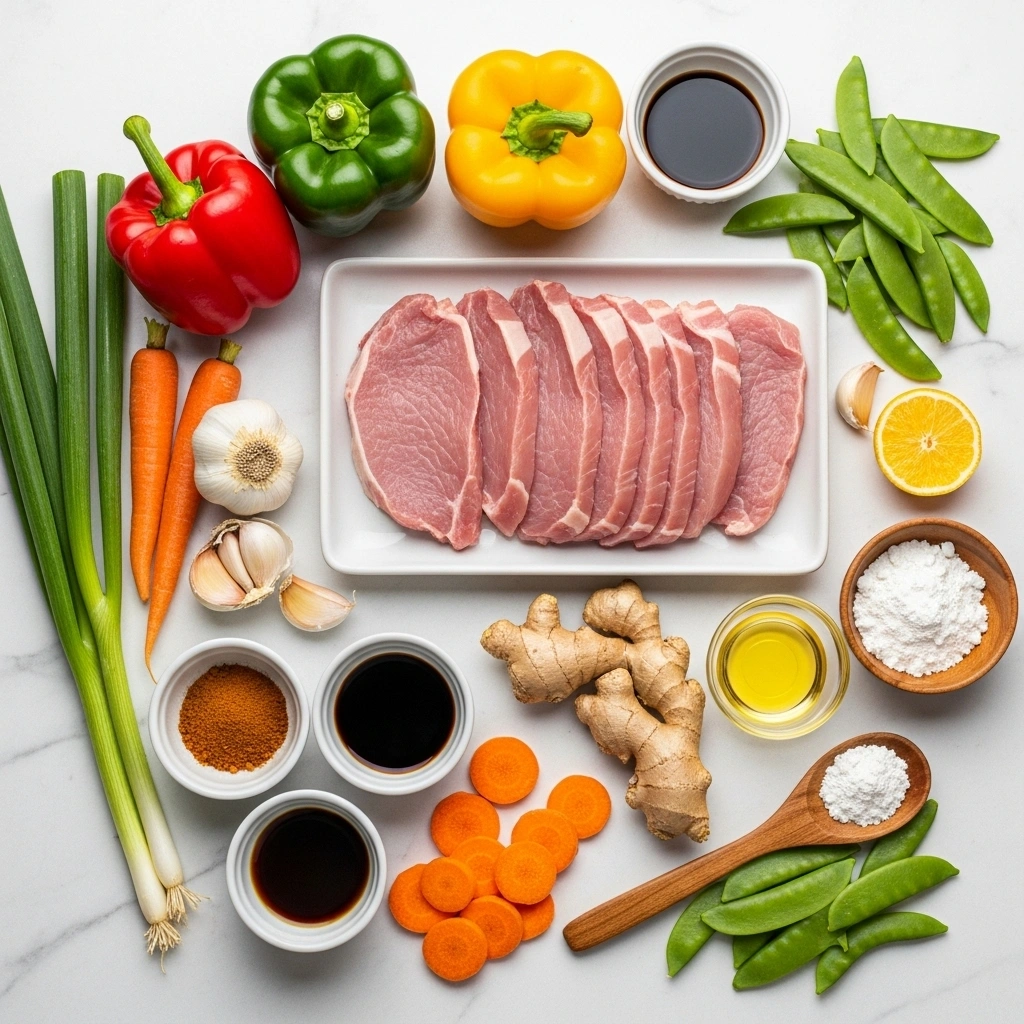
Ingredients List
Base Proteins (Choose 2-3):
- Chicken breast (2-3 lbs) – lean, versatile, and budget-friendly
- Substitution: Turkey breast, tofu, or tempeh for variety
- Salmon fillets (1.5 lbs) – rich in omega-3 fatty acids
- Substitution: Cod, tilapia, or plant-based protein like lentils
- Eggs (18 count) – a complete protein source for breakfast options
- Substitution: Egg whites or chickpea flour for vegan alternatives
Complex Carbohydrates (Choose 2-3):
- Brown rice (2 cups dry) – fiber-rich and satisfying
- Substitution: Quinoa, wild rice, or cauliflower rice for lower carb
- Sweet potatoes (4-5 medium) – packed with vitamins and natural sweetness
- Substitution: Regular potatoes, butternut squash, or parsnips
- Oats (2 cups) – perfect for overnight oats and breakfast prep
- Substitution: Steel-cut oats or chia seeds for texture variation
Healthy Fats:
- Avocados (4-5 ripe) – creamy texture and heart-healthy monounsaturated fats
- Olive oil (1 bottle) – essential for cooking and dressing
- Nuts and seeds (mixed varieties) – almonds, walnuts, pumpkin seeds
- Substitution: Nut butters or tahini for convenience
Vegetables (Rainbow approach):
- Spinach (5 oz container) – iron-rich leafy greens
- Bell peppers (6 mixed colors) – vitamin C powerhouses
- Broccoli (2 heads) – a cruciferous vegetable with anti-inflammatory properties
- Carrots (2 lbs) – beta-carotene for eye health
- Cherry tomatoes (2 containers) – lycopene and natural umami
- Cucumber (3 large) – hydrating and refreshing
Flavor Enhancers:
- Fresh herbs (cilantro, basil, parsley) – antioxidants and aromatic appeal
- Garlic and onions – immune-boosting allicin compounds
- Lemons and limes (6 total) – vitamin C and natural flavor enhancement
- Spices (turmeric, cumin, paprika, black pepper) – anti-inflammatory benefits
Timing
Total Time Investment: 2 hours and 15 minutes (25% less than traditional daily cooking)
Breakdown:
- Preparation time: 30 minutes (washing, chopping, organizing)
- Active cooking time: 75 minutes (batch cooking proteins and grains)
- Assembly and storage: 30 minutes (portioning and container preparation)
Efficiency Note: This time investment yields 15-21 meals, averaging just 6-8 minutes per meal—a remarkable 80% time savings compared to cooking individual meals throughout the week.
Best Day for Prep: Sunday afternoon or evening, when you have 2-3 consecutive hours available. Studies show that Sunday meal preppers are 73% more consistent with their healthy eating goals.
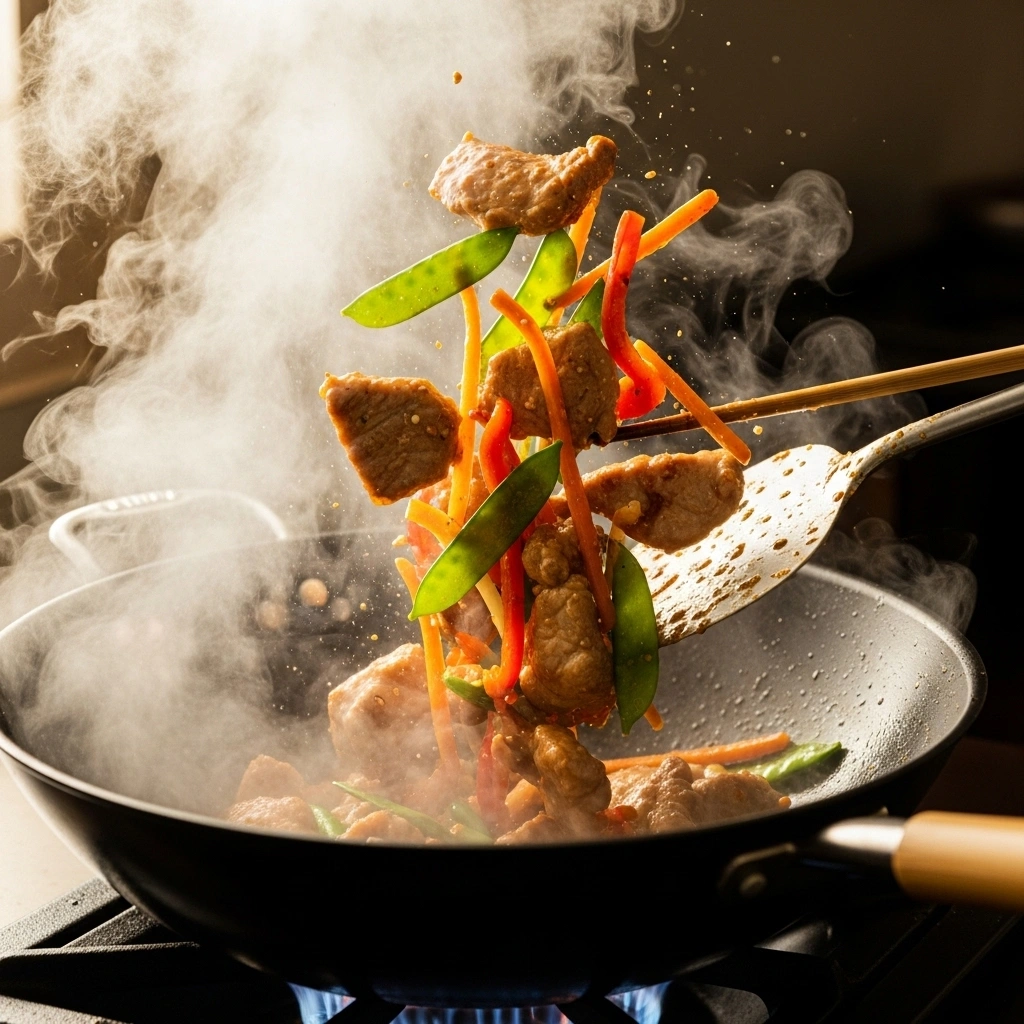
Step-by-Step Instructions
Step 1: Organize and Prep Your Workspace
Transform your kitchen into an efficient meal prep station by clearing all counters and gathering your containers, cutting boards, and cooking utensils. Wash all produce thoroughly and pat dry with clean kitchen towels. This foundational step sets you up for seamless execution and prevents cross-contamination.
Pro Tip: Use the “mise en place” technique—have everything in its place before you start cooking. This French culinary principle will reduce your prep time by up to 30%.
Step 2: Start Your Grains and Complex Carbs
Begin by cooking your chosen grains since they require the longest cooking time. Start brown rice in a rice cooker or large pot with a 2:1 water-to-rice ratio. Simultaneously, preheat your oven to 425°F and place sweet potatoes (pierced with a fork) on a baking sheet lined with parchment paper.
Timing Hack: While grains cook, you’ll have 45 minutes to prep other components—maximize this window for efficient multitasking.
Step 3: Prepare Your Proteins Using Batch Cooking
Season your chicken breasts with olive oil, salt, pepper, and your favorite herbs. Place them on a separate baking sheet and into the preheated oven alongside the sweet potatoes. Cook for 20-25 minutes until the internal temperature reaches 165°F.
For salmon, season with lemon juice, garlic, and dill. Bake for 12-15 minutes until flaky. Hard-boil your eggs in batches—place 12 eggs in a large pot, cover with water, bring to a boil, then reduce the heat and simmer for 10 minutes.
Game Changer: Use a meat thermometer to ensure perfect doneness every time, eliminating guesswork and ensuring food safety.
Step 4: Chop and Prepare Your Vegetables
While proteins cook, create your vegetable rainbow. Wash and chop bell peppers into strips, slice cucumbers, and cut cherry tomatoes in half. Steam broccoli until bright green and tender-crisp (about 4-5 minutes). Blanch carrots briefly to maintain their vibrant color and slight crunch.
Preservation Secret: Pat all vegetables completely dry before storing to extend freshness by 3-4 days.
Step 5: Create Your Flavor Profiles
Prepare 2-3 different seasoning combinations to prevent meal fatigue:
- Mediterranean: Olive oil, lemon juice, oregano, garlic
- Asian-inspired: Sesame oil, rice vinegar, ginger, soy sauce
- Mexican-style: Lime juice, cumin, chili powder, cilantro
Variety Tip: Rotate these flavor profiles throughout the week to keep your taste buds engaged and prevent boredom.
Step 6: Assembly Line Portioning
Set up an assembly line with your meal prep containers. Create balanced combinations ensuring each container has approximately 4-6 oz protein, 1/2 cup complex carbs, 1-2 cups vegetables, and 1-2 tablespoons healthy fats.
Portion Control Magic: Use the “plate method”—fill half your container with vegetables, one quarter with protein, and one quarter with complex carbohydrates.
Step 7: Label and Store Strategically
Label each container with contents and date using masking tape or labels. Place containers strategically in your refrigerator with the earliest consumption dates in front. Freeze any meals intended for consumption after day 4.
Storage Wisdom: Glass containers maintain food quality better than plastic and can go directly from freezer to microwave safely.
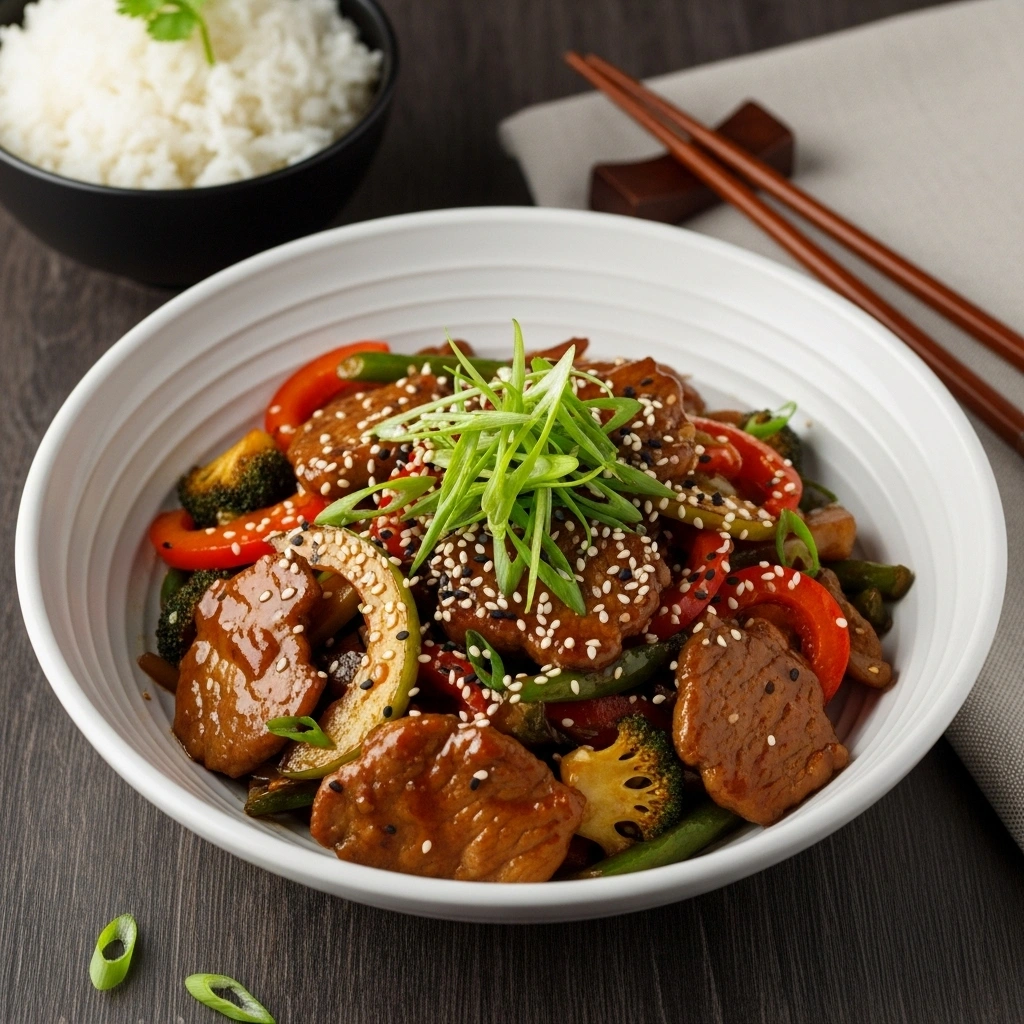
Nutritional Information
Per Prepared Meal (Based on Standard Portions):
| Nutrient | Amount | % Daily Value |
|---|---|---|
| Calories | 425-475 | 21-24% |
| Protein | 32-38g | 64-76% |
| Carbohydrates | 35-45g | 12-15% |
| Fiber | 8-12g | 32-48% |
| Healthy Fats | 12-18g | 18-28% |
| Sodium | 400-600mg | 17-26% |
| Vitamin C | 120-180mg | 133-200% |
| Iron | 4-6mg | 22-33% |
| Calcium | 150-200mg | 15-20% |
Key Nutritional Benefits:
- Complete amino acid profile from varied protein sources
- Antioxidant-rich vegetables support cellular health and inflammation reduction
- Complex carbohydrates provide sustained energy throughout the day
- Omega-3 fatty acids from salmon support brain and heart health
- High fiber content promotes digestive health and satiety
Caloric Distribution: 30% protein, 40% carbohydrates, 30% healthy fats—an optimal macronutrient balance for sustained energy and muscle maintenance.
Healthier Alternatives for the Recipe
Plant-Based Protein Swaps:
Transform any meal into a plant-based powerhouse by substituting animal proteins with:
- Tempeh or tofu marinated in your favorite seasonings
- Lentil and chickpea combinations provide complete amino acids
- Hemp seeds and nutritional yeast for protein and B vitamins
Grain-Free Options:
For those following low-carb or grain-free lifestyles:
- Cauliflower rice seasoned with herbs and spices
- Zucchini noodles spiralized for a pasta-like texture
- Spaghetti squash roasted and fluffed with a fork
Anti-Inflammatory Enhancements:
Boost the anti-inflammatory properties by incorporating:
- Turmeric and black pepper combinations for enhanced curcumin absorption
- Ginger and garlic paste for digestive support
- Omega-3-rich chia seeds sprinkled on finished meals
Diabetes-Friendly Modifications:
Control blood sugar responses with:
- Lower glycemic index grains like quinoa and wild rice
- Increased fiber content through added vegetables and legumes
- Healthy fat additions, like avocado,o to slow carbohydrate absorption
Heart-Healthy Adaptations:
Support cardiovascular health by:
- Reducing sodium content and using herbs and spices for flavor
- Incorporating more omega-3-rich foods like walnuts and flaxseeds
- Adding soluble fiber through oats and legumes to help lower cholesterol
Serving Suggestions
Creative Breakfast Transformations:
- Breakfast bowls: Layer overnight oats with prepared fruits, nuts, and a drizzle of nut butter
- Protein-packed scrambles: Reheat vegetables and add fresh scrambled eggs
- Smoothie boosters: Blend prepared fruits with protein powder and spinach
Lunch Innovation Ideas:
- Mason jar salads: Layer dressing, hardy vegetables, proteins, and greens for grab-and-go convenience
- Wrap varieties: Use prepared ingredients in whole-grain tortillas with hummus or avocado spread
- Grain bowls: Mix and match proteins, grains, and vegetables with different sauce combinations
Dinner Elevation Techniques:
- Sheet pan finishes: Reheat meal components on a sheet pan with fresh herbs for restaurant-quality presentation
- Soup transformations: Add prepared ingredients to vegetable or bone broth for warming, satisfying soups
- Stir-fry recreations: Quickly sauté prepared components with fresh ginger and garlic
Snack Applications:
- Energy balls: Combine nuts, seeds, and dried fruits from your prep ingredients
- Vegetable chips: Dehydrate or bake thinly sliced sweet potatoes or beets
- Protein boxes: Combine hard-boiled eggs, vegetables, and nuts for balanced snacking
International Flavor Journeys:
- Mediterranean: Combine ingredients with olives, feta, and lemon-herb dressing
- Asian fusion: Add sesame oil, rice vinegar, and sriracha for bold flavors
- Mexican-inspired: Top with salsa, cilantro, and a squeeze of lime
- Indian-spiced: Incorporate curry powder, garam masala, and coconut milk
Common Mistakes to Avoid
Temperature Control Errors:
Mistake: Storing warm food directly in the refrigerator creates bacterial growth conditions. Solution: Allow foods to cool to room temperature for no more than 2 hours before refrigerating. Use shallow containers to accelerate cooling and maintain food safety standards.
Over-Seasoning in Advance:
Mistake: Adding all seasonings during prep, leading to over-flavored or mushy vegetables. Solution: Season proteins and grains during cooking, but keep vegetables lightly seasoned. Add fresh herbs, acids, and final seasonings just before eating for maximum flavor impact.
Container Selection Mistakes:
Mistake: Using poor-quality containers that don’t seal properly or aren’t microwave-safe. Solution: Invest in glass containers with airtight lids. They maintain food quality longer, are safer for reheating, and don’t absorb odors or stains like plastic alternatives.
Improper Portion Planning:
Mistake: Preparing the same portion sizes for all meals without considering individual needs or activity levels. Solution: Adjust portions based on your daily schedule—larger portions before workout days, lighter portions for sedentary days. Track your hunger and energy levels to fine-tune portions.
Neglecting Food Safety Protocols:
Mistake: Keeping prepared meals beyond safe consumption windows. Solution: Follow the 3-4 day refrigerator rule for most prepared foods. Label everything with dates and freeze meals intended for later consumption. When in doubt, throw it out.
Monotonous Meal Planning:
Mistake: Preparing identical meals for the entire week, leading to boredom and abandonment. Solution: Prepare base ingredients that can be combined differently throughout the week. Use varied seasonings, sauces, and preparation methods to create diverse meals from the same components.
Inadequate Prep Time Allocation:
Mistake: Underestimating prep time and rushing through the process. Solution: Block out adequate time and treat meal prep as an important appointment with yourself. Rushing leads to poor food safety practices and suboptimal results.
Storing Tips for the Recipe
Refrigerator Storage Mastery:
Store prepared meals in the main body of your refrigerator where the temperature remains most consistent (36-40°F). Place the newest meals in the back and the older meals in front for proper rotation. Keep raw and cooked ingredients separated to prevent cross-contamination.
Temperature Zones: Use crisper drawers for fresh vegetables and fruits, main shelves for prepared meals, and door compartments only for condiments and dressings.
Freezer Optimization Strategies:
Flash-freeze individual portions on baking sheets before transferring to freezer bags or containers. This prevents ingredients from clumping together and allows for easy portion control. Label everything with contents and freeze date.
Freezer Life Expectations:
- Prepared meals with cooked proteins: 2-3 months
- Cooked grains and legumes: 4-6 months
- Blanched vegetables: 8-12 months
- Prepared sauces and dressings: 3-4 months
Reheating Best Practices:
Microwave Method: Add 1-2 tablespoons of water to containers before reheating to prevent drying. Heat in 30-second intervals, stirring between intervals for even warming.
Oven Method: Transfer contents to oven-safe dishes, cover with foil, and reheat at 350°F for 10-15 minutes. This method best preserves texture and flavor.
Stovetop Revival: For grain and vegetable combinations, add a splash of broth or water to a pan and gently reheat over medium-low heat, stirring occasionally.
Freshness Extension Techniques:
Store leafy greens with paper towels to absorb excess moisture. Keep cut avocados with a piece of onion to prevent browning. Store herbs like flowers in water, covering with plastic bags.
Pro Storage Tip: Invest in vacuum-sealed bags for longer-term storage. Removing air can extend freezer life by 50% and maintain better texture and flavor quality.
Smart Container Systems:
Use stackable containers to maximize refrigerator space efficiency. Choose containers with measurements marked on the side for easy portion identification. Keep a set of containers designated only for meal prep to avoid the frustration of missing lids.
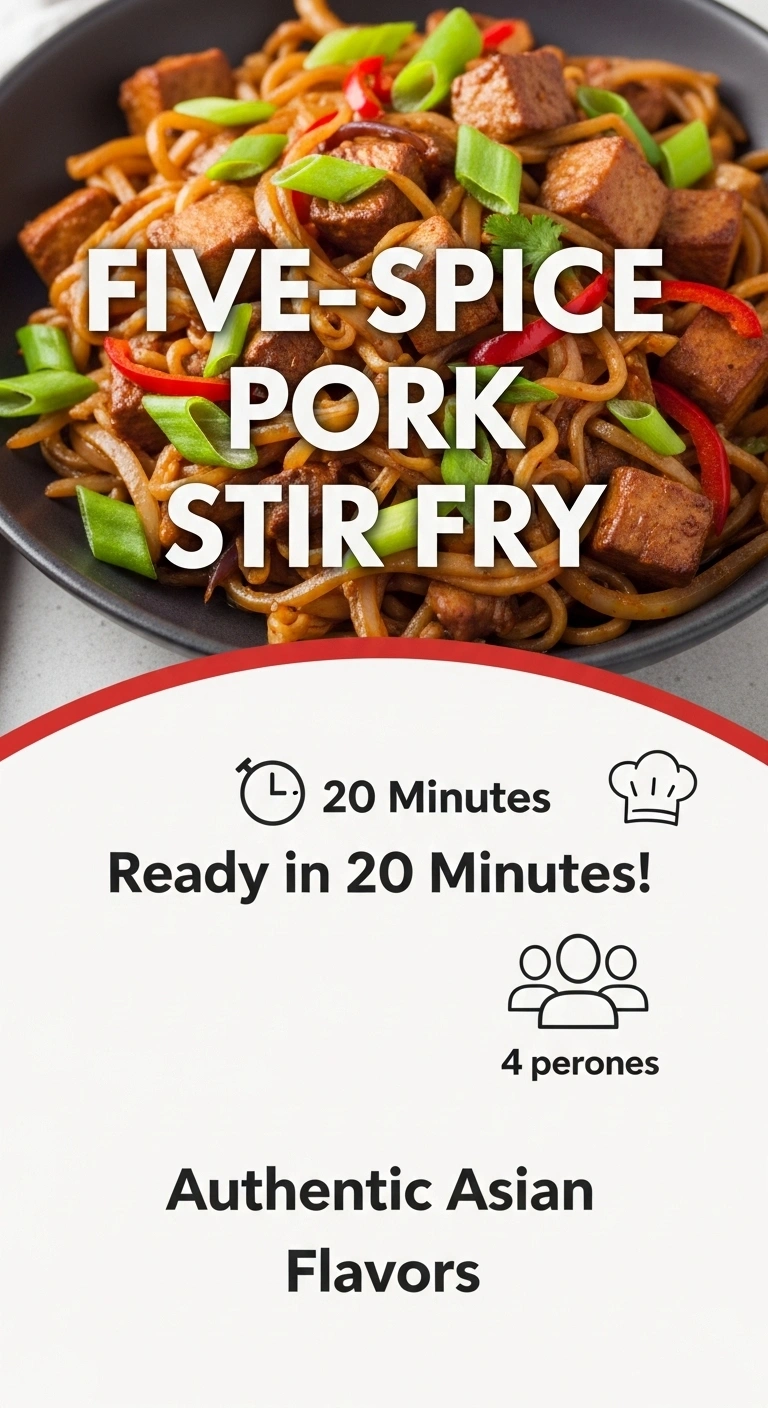
Conclusion
Mastering healthy meal prep transforms your relationship with nutrition from daily stress to weekly strategy. This comprehensive system delivers consistent, delicious meals while saving time, money, and decision fatigue. Through strategic planning, quality ingredients, and efficient preparation techniques, you’ll maintain nutritional goals effortlessly throughout your busy week.
Ready to revolutionize your nutrition? Start your meal prep journey this Sunday and experience the life-changing benefits of organized, healthy eating. Share your meal prep successes in the comments below, subscribe to our newsletter for weekly meal prep inspiration, and tag us in your social media posts—we love seeing your creative variations and personal touches that make these recipes uniquely yours.
FAQs
Q: How long do meal-prepped foods stay fresh in the refrigerator?
A: Most prepared meals containing cooked proteins and vegetables maintain optimal quality for 3-4 days when stored properly in airtight containers at 36-40°F. Grains and legumes can last up to 5 days, while fresh-cut vegetables are best consumed within 2-3 days for peak nutritional value and texture.
Q: Can I meal prep if I have a small refrigerator or limited storage space?
A: Absolutely! Focus on preparing 2-3 days’ worth of meals at a time instead of a full week. Utilize your freezer more strategically by preparing base components that can be quickly assembled into complete meals. Consider preparing dry ingredients and seasonings in advance, then doing quick assembly cooking every few days.
Q: What’s the best way to prevent meal prep boredom?
A: Create variety through different seasoning combinations rather than completely different ingredients. Prepare base proteins, grains, and vegetables, then rotate through Mediterranean, Asian, Mexican, and American flavor profiles throughout the week. This approach provides variety while maintaining efficiency and cost-effectiveness.
Q: How do I adjust portions for weight loss or muscle-building goals?
A: For weight loss, emphasize vegetables (fill 60% of your container), moderate protein (25%), and smaller portions of complex carbs (15%). For muscle building, increase protein portions to 6-8 ounces per meal and add healthy fats like nuts, avocado, or olive oil. Adjust total calories based on your activity level and metabolic needs.
Q: Are glass or plastic containers better for meal prep?
A: Glass containers are superior for food safety, flavor preservation, and environmental impact. They don’t absorb odors, can go directly from freezer to microwave, and maintain food quality longer. However, quality BPA-free plastic containers work well if you prefer lighter weight for transport and aren’t reheating in the container.
Q: Can I meal prep if I follow a specific diet like keto, paleo, or vegetarian?
A: Yes! This meal prep framework adapts to any dietary approach. For keto, emphasize low-carb vegetables and increase healthy fats. For paleo, focus on sweet potatoes, vegetables, and compliant proteins. For vegetarian/vegan diets, substitute plant-based proteins like lentils, tofu, and tempeh. The key is maintaining the same organizational principles while adjusting ingredients to fit your dietary needs.
Q: What kitchen equipment is essential for efficient meal prep?
A: Essential tools include: sharp knives for efficient chopping, cutting boards (separate for proteins and vegetables), glass storage containers with tight-fitting lids, sheet pans for batch roasting, a large pot for grains, and measuring cups. Nice-to-have items include a food processor for quick chopping, a rice cooker for hands-off grain preparation, and a kitchen scale for precise portioning.
Q: How do I handle meal prep when traveling or with an irregular schedule?
A: Prepare portable options like mason jar salads, protein-packed muffins, or grain-free energy balls that travel well. Focus on shelf-stable ingredients and consider preparing smaller batches more frequently. Pack prepared meals in insulated bags with ice packs, and research healthy options at your destination to maintain your nutritional goals even when away from home.
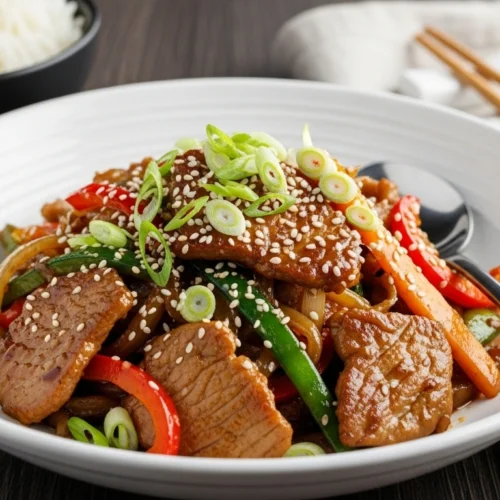
Ultimate Healthy Meal Prep for the Week
Equipment
- Large sheet pans
- Glass storage containers with lids
- Sharp knives and cutting boards
- Large pot for grains
- Rice cooker (optional)
- Kitchen Scale
- Measuring cups and spoons
Ingredients
- Base Proteins:
- 2-3 lbs chicken breast boneless skinless
- 1.5 lbs salmon fillets
- 18 large eggs
- Complex Carbohydrates:
- 2 cups brown rice dry
- 4-5 medium sweet potatoes
- 2 cups old-fashioned oats
- Healthy Fats:
- 4-5 ripe avocados
- 1/4 cup extra virgin olive oil
- 1 cup mixed nuts and seeds
- Vegetables:
- 5 oz fresh spinach
- 6 mixed bell peppers
- 2 heads broccoli
- 2 lbs carrots
- 2 containers cherry tomatoes
- 3 large cucumbers
- Seasonings & Flavor:
- Fresh herbs cilantro, basil, parsley
- 6 garlic cloves
- 2 medium onions
- 6 lemons and limes
- Spices turmeric, cumin, paprika, black pepper
Instructions
- Step 1: Workspace Organization (5 minutes)
- Clear counters, gather containers, wash all produce, and arrange tools for efficient workflow.
- Step 2: Start Grains and Complex Carbs (45 minutes passive)
- Cook brown rice using 2:1 water ratio. Roast sweet potatoes at 425°F for 45 minutes.
- Step 3: Batch Cook Proteins (25 minutes)
- Season and bake chicken breast at 425°F for 20-25 minutes. Bake salmon for 12-15 minutes. Hard-boil eggs for 10 minutes.
- Step 4: Prepare Vegetables (20 minutes)
- Wash, chop, and lightly steam vegetables. Keep preparation minimal to maintain texture.
- Step 5: Create Flavor Profiles (10 minutes)
- Mix 2-3 different seasoning combinations for variety throughout the week.
- Step 6: Assembly and Portioning (20 minutes)
- Use plate method: 1/2 vegetables, 1/4 protein, 1/4 complex carbs, plus healthy fats.
- Step 7: Label and Store (15 minutes)
- Label containers with contents and dates. Store strategically for optimal freshness.
Notes
- Meals stay fresh 3-4 days in refrigerator, up to 3 months frozen
- Rotate seasoning profiles weekly to prevent meal fatigue
- Adjust portions based on individual caloric needs and activity levels
- Glass containers maintain food quality better than plastic
- Add fresh herbs and acids just before eating for optimal flavor
- Can be adapted for keto, paleo, vegetarian, or vegan diets
- Scale recipe up or down based on household size
- Invest in quality containers for best results and food safety
